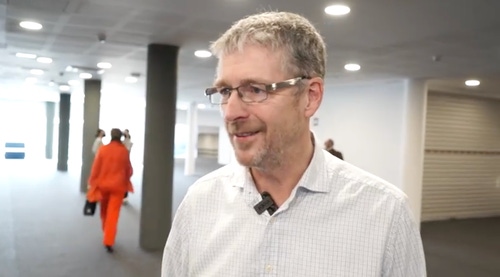6G will not be a new radio standard, say BT and Vodafone6G will not be a new radio standard, say BT and Vodafone

Nobody really knows what 6G will be, or even if the generational approach will still be in use eight years from now, when it would be expected to arrive. The most far-fetched ideas involve brain-computer interfaces, allowing people to control machines by thought. The most humdrum envisage more energy-efficient basestations and open interfaces. But two prominent telco executives think they already know what it will not be – and that’s a new air interface.
Andrea Dona, the chief network officer of Vodafone UK, and Howard Watson, the chief technology officer of BT, are increasingly confident 6G will use the same orthogonal frequency division multiplexing (OFDM) technology on which 5G is based. It is a significant development simply because much of the research for previous generations was focused on the air interface.
“6G is not going to have a new connectivity layer,” said Dona at a press conference this week. “It’s not going to because there is nothing coming out of universities in terms of new access methodology. It is still going to be OFDM technologies, the same technologies I studied 20 or 30 years ago at the University of Padua.”
His remarks came days after Watson delivered the same message at the recent Mobile World Congress (MWC) tradeshow in Barcelona. “I love the fact it’s the same radio standard,” he told Light Reading. “So far it’s looking like that’s the same.”
Competing ideas
If they are right, the International Telecommunications Union (ITU) arguably faces an even bigger challenge than usual. Before the end of the year, the United Nations body is expected to outline its vision for 6G, setting the parameters that international standards groups will subsequently follow, according to Adrian Scrase, the chief technology officer of the European Telecommunications Standards Institute.
When it published its 5G vision in 2015, the ITU devoted much of its attention to radio, as shown by the basic press release it issued at the time. “The next step is to establish detailed technical performance requirements for the radio systems to support 5G, taking into account the needs of a wide portfolio of future scenarios and use cases, and then to specify the evaluation criteria for assessment of candidate radio interface technologies to join the IMT-2020 family,” it said. IMT-2020, essentially, is the ITU’s codeword for 5G.
But if this part remains the same in 6G, telecom authorities will need to come up with something that warrants industry and government attention. And here, there are literally dozens of competing ideas – many of which look tangential to telecom.
To read the complete article, visit Light Reading.



